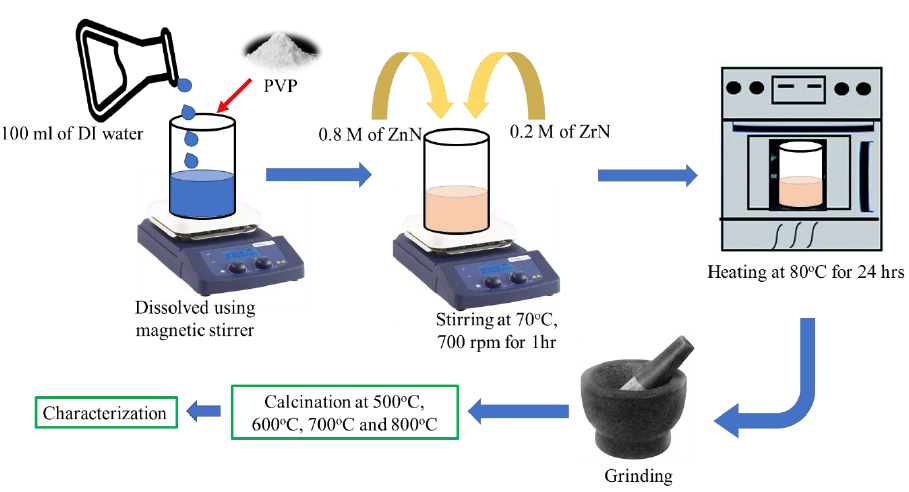Tailoring Structural, Morphological, and Photocatalytic Properties of ZnO-ZrO2 Nanocomposites: Influence of Calcination Temperature
Keywords:
Semiconductor, Nanocomposite, Calcination, Crystallinity, (ZnO)0.8 (ZrO2)0.2Abstract
This study presents the synthesis and characterization of (ZnO)0.8(ZrO2)0.2 nanocomposites using a polyvinylpyrrolidone (PVP)-assisted thermal route, with calcination temperatures ranging from 500 °C to 800 °C. X-ray diffraction (XRD) confirmed the coexistence of hexagonal ZnO and monoclinic ZrO₂ phases, with crystallinity progressively improving with temperature. Crystallite sizes increased from ~11.0 nm at 500 °C to ~32.5 nm at 800 °C, as confirmed by both XRD and high-resolution transmission electron microscopy (TEM). Morphological evolution demonstrated controlled particle growth and uniform dispersion, while photoluminescence (PL) spectra revealed enhanced near-band-edge emissions and reduced deep-level emissions at higher temperatures, indicating suppressed electron–hole recombination. Notably, calcination at 700–800 °C provided an optimal balance between crystallinity and defect passivation. These results highlight the critical role of calcination temperature in tailoring structural, morphological, and optical properties, thereby enhancing the photocatalytic efficiency of ZnO-ZrO2 composites for potential use in energy conversion and environmental remediation technologies.





